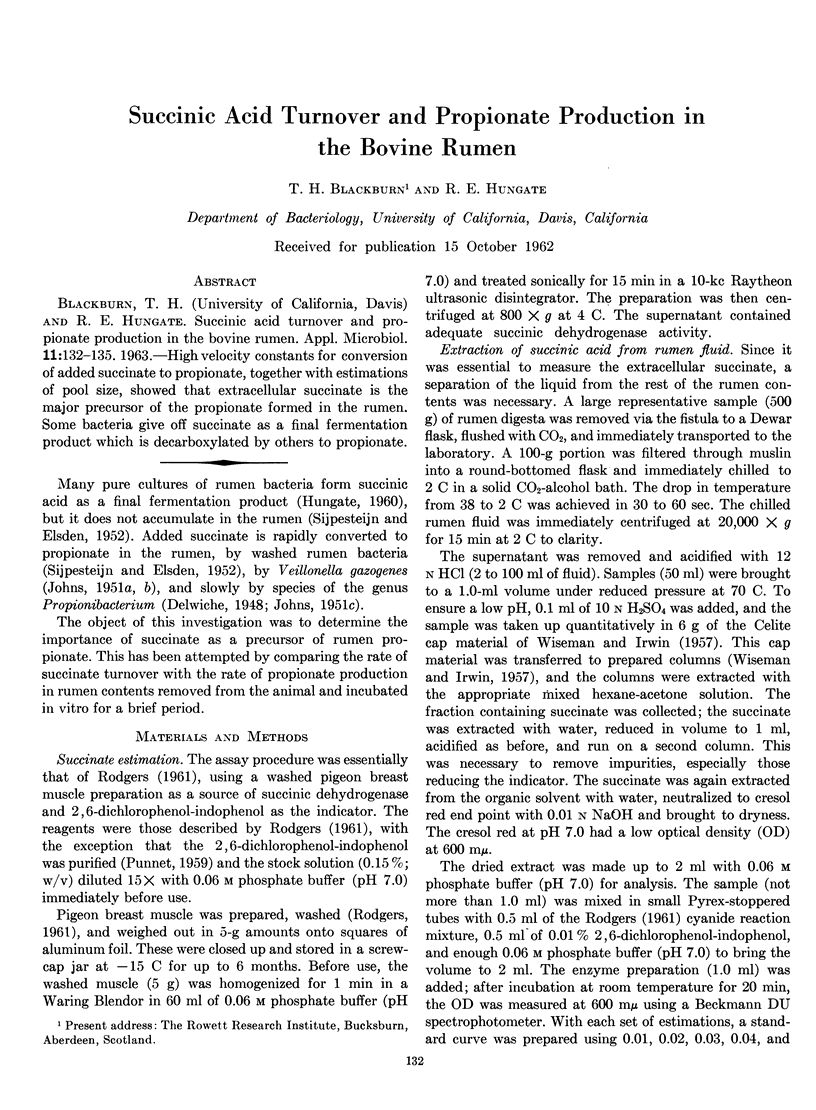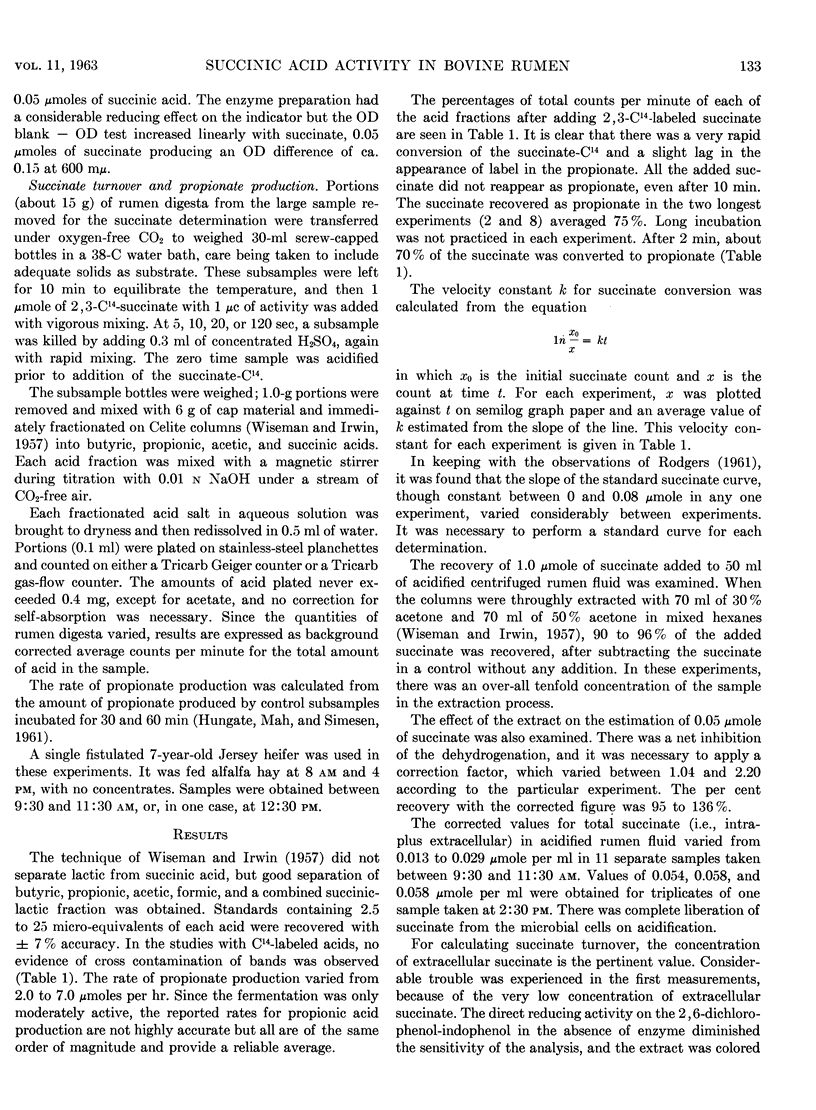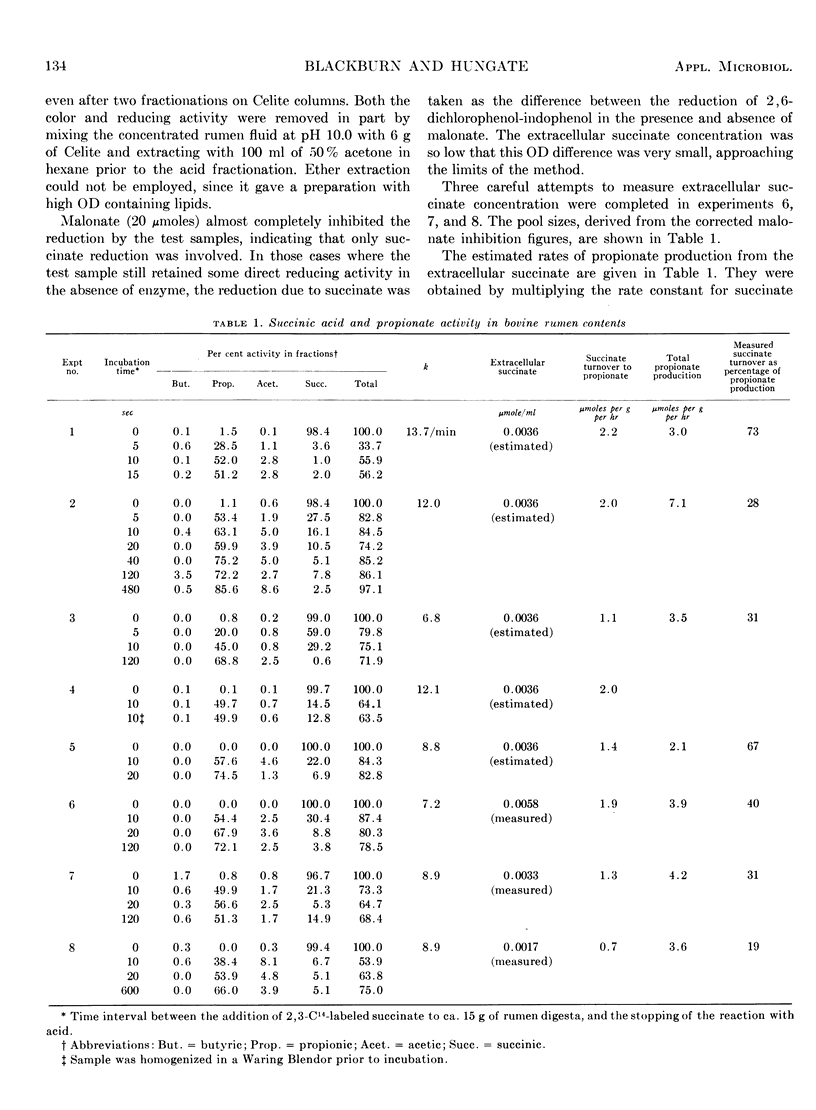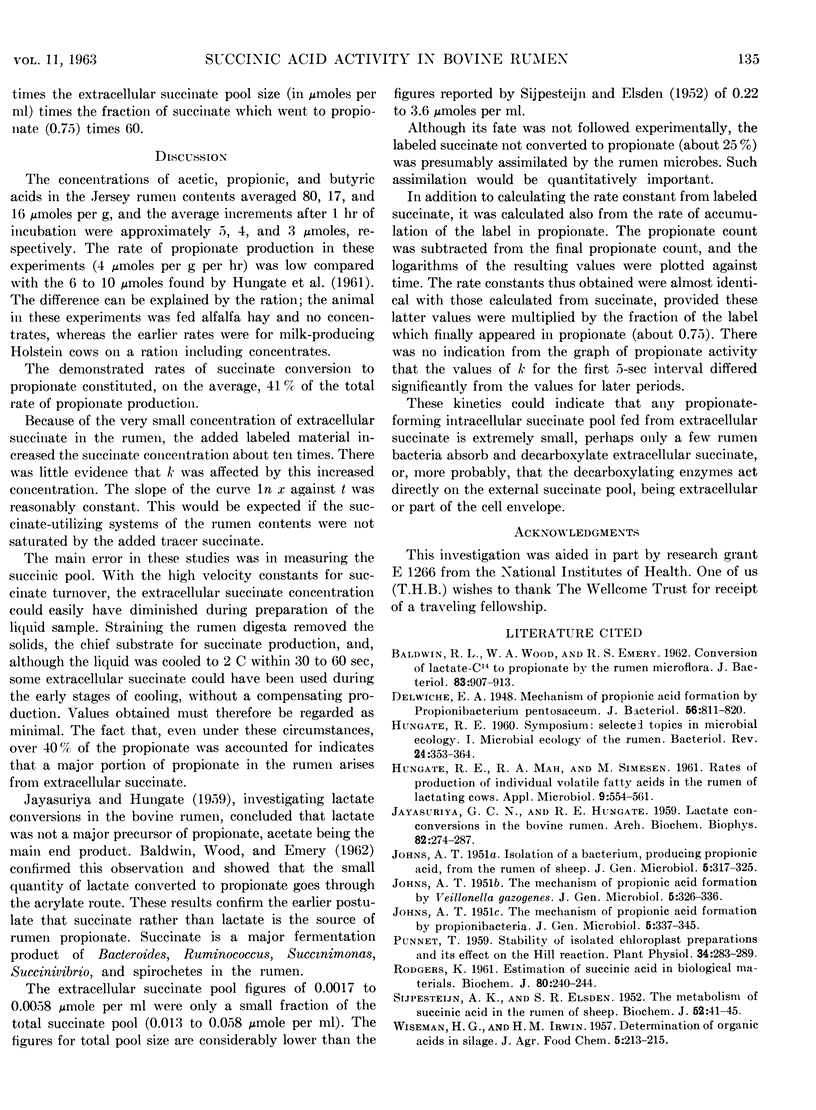Abstract
High velocity constants for conversion of added succinate to propionate, together with estimations of pool size, showed that extracellular succinate is the major precursor of the propionate formed in the rumen. Some bacteria give off succinate as a final fermentation product which is decarboxylated by others to propionate.
Full text
PDF



Selected References
These references are in PubMed. This may not be the complete list of references from this article.
- BALDWIN R. L., WOOD W. A., EMERY R. S. Conversion of lactate-C14 to propionate by the rumen microflora. J Bacteriol. 1962 Apr;83:907–913. doi: 10.1128/jb.83.4.907-913.1962. [DOI] [PMC free article] [PubMed] [Google Scholar]
- Delwiche E. A. Mechanism of Propionic Acid Formation by Propionibacterium pentosaceum. J Bacteriol. 1948 Dec;56(6):811–820. doi: 10.1128/jb.56.6.811-820.1948. [DOI] [PMC free article] [PubMed] [Google Scholar]
- HUNGATE R. E., MAH R. A., SIMESEN M. Rates of production of individual volatile fatty acids in the rumen of lactating cows. Appl Microbiol. 1961 Nov;9:554–561. doi: 10.1128/am.9.6.554-561.1961. [DOI] [PMC free article] [PubMed] [Google Scholar]
- HUNGATE R. E. Symposium: selected topics in microbial ecology. I. Microbial ecology of the rumen. Bacteriol Rev. 1960 Dec;24(4):353–364. doi: 10.1128/br.24.4.353-364.1960. [DOI] [PMC free article] [PubMed] [Google Scholar]
- JAYASURIYA G. C., HUNGATE R. E. Lactate conversions in the bovine rumen. Arch Biochem Biophys. 1959 Jun;82(2):274–287. doi: 10.1016/0003-9861(59)90123-7. [DOI] [PubMed] [Google Scholar]
- JOHNS A. T. Isolation of a bacterium, producing propionic acid, from the rumen of sheep. J Gen Microbiol. 1951 May;5(2):317–325. doi: 10.1099/00221287-5-2-317. [DOI] [PubMed] [Google Scholar]
- JOHNS A. T. The mechanism of propionic acid formation by Veillonella gazogenes. J Gen Microbiol. 1951 May;5(2):326–336. doi: 10.1099/00221287-5-2-326. [DOI] [PubMed] [Google Scholar]
- JOHNS A. T. The mechanism of propionic acid formation by propionibacteria. J Gen Microbiol. 1951 May;5(2):337–345. doi: 10.1099/00221287-5-2-337. [DOI] [PubMed] [Google Scholar]
- Punnett T. Stability of Isolated Chloroplast Preparations and its Effect on Hill Reaction Measurements. Plant Physiol. 1959 May;34(3):283–289. doi: 10.1104/pp.34.3.283. [DOI] [PMC free article] [PubMed] [Google Scholar]
- RODGERS K. Estimation of succinic acid in biological materials. Biochem J. 1961 Aug;80:240–244. doi: 10.1042/bj0800240. [DOI] [PMC free article] [PubMed] [Google Scholar]
- SIJPESTEIJN A. K., ELSDEN S. R. The metabolism of succinic acid in the rumen of the sheep. Biochem J. 1952 Sep;52(1):41–45. doi: 10.1042/bj0520041. [DOI] [PMC free article] [PubMed] [Google Scholar]


